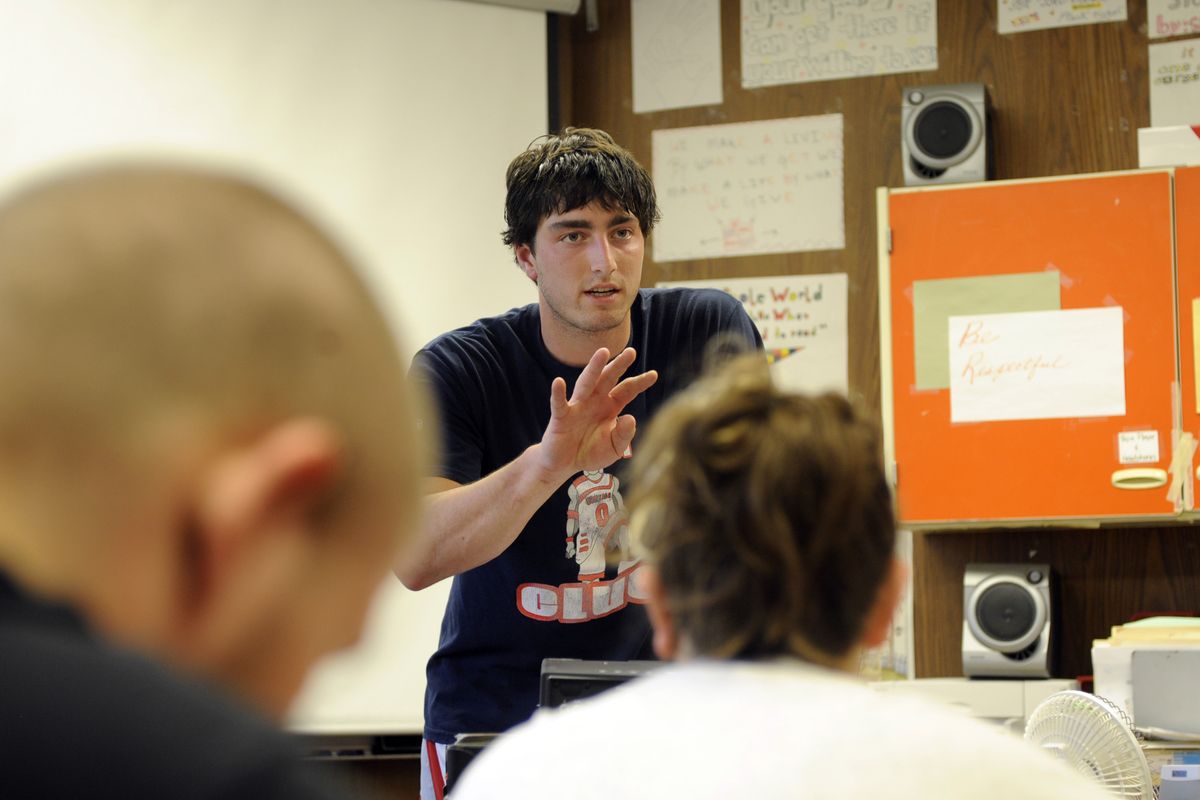Juvenile detention center offers education to kids

When the 15-year-old Cheney girl arrived at Spokane County Juvenile Detention Center, she didn’t know how to multiply, add or subtract.
She’d dropped out of school in seventh grade and had decided her life was basically hopeless.
But the education program at the detention center has changed her outlook.
“I’m kinda glad I got caught, because I’ve learned a lot,” the teen said. She was locked up last month because she got drunk and tried to rob someone for drug money.
Her parents are both in prison, she said. “This has made me realize I don’t have to live my life like that.”
Eastern Washington has long been at the forefront of educating juveniles who land behind bars.
A class action lawsuit stemming from a 1975 Spokane County case established a youth’s right to receive an education while incarcerated, and Spokane County was the first in the state to establish a school for kids on home-monitoring programs.
In the 2009-’10 school year, the programs at Spokane County Juvenile Detention Center and Martin Hall in Medical Lake reached more than 2,200 kids between the ages of 8 and 18. About 200 additional young people were served by the Structured Alternative Confinement School, which is for juveniles on electronic home monitoring or who are court ordered to go to school.
“A lot that come in haven’t been in school much,” said Larry Gardner, the detention school’s principal for 14 years. “We give them a lot more stability, a safe place, they get food and they have a place to sleep, so they have a chance to learn.”
The Cheney girl’s story is typical of those in the juvenile detention system. Many haven’t been to school for months or years and about 30 percent are homeless, school officials said. Around 35 percent of the students qualify for special education.
The school at the Spokane County Juvenile Detention Center consists of four classrooms and a gym. The students have five class sessions per day that include language arts, health, math and social studies.
“We try to stay as close to traditional learning as possible,” Gardner said. In addition to the core subjects, students are also taught how to create PowerPoint presentations, operate Photoshop, and navigate Microsoft Word and Publisher.
School is in session 220 days a year. The school’s annual budget is about $1 million.
Recently, the school’s educational focus also has included life skills such as independent living, job interview skills and résumé writing, and being more successful in public schools when they re-enter, such as assessing how many credits the students need in order to graduate.
“Many don’t finish school (when they leave) so it’s important for them to have other skills,” Gardner said.
The typical classroom in the detention center has about 10 students of various ages, said Dan Fuller, the facility’s lead teacher.
The 20-year veteran said the biggest challenges are accommodating different levels of learning in one classroom, and being able to get students learning quickly.
“It’s a lot of individualized learning,” Fuller said.
The average stay for a juvenile is about 10 days. Some juveniles who come in are not first-timers, so instructors get a chance to continue to work with them. Regardless, the hope is always to fulfill the program’s motto: “Justice begins with education.”
A 17-year-old boy, who admits he’s no stranger to detention, said, “If I would go to school, it would keep me out of trouble. If they gave me another chance, I would go to school.”
The largest obstacle to the boy’s learning, he said, was not having teachers he liked or trusted and being a runaway since middle school.
“Dan’s working with you 24-7. He’s talkative and friendly,” the boy said. “Sometimes, I’ll be in my cell thinking I wish I could be in Dan’s class.”
“The kids are looking for someone positive,” Fuller said. “They’ve been knocked down a lot in life.”
The Structured Alternative Confinement School, for juveniles on electronic home monitoring or who are ordered by a court to attend school, was created 15 years ago. It’s located near the juvenile detention center.
Students there study core subjects for half the day at the school; the other half is devoted to pre-GED preparation.
Gardner says “it’s a stepping stone” for the kids who were convicted of nonviolent crimes and who are on home-monitoring programs.Fuller, who’s been teaching for more than 30 years, said that like any teacher, the kids keep him coming back. “We look at the small successes,” he said.
The teacher cites a note a past student sent him: “You’re an awesome friend and teacher. I’ve yet to meet anyone even remotely close to being like you. … I hope that in my life’s journey I find more people like you … and remember ‘I’m only a mirror of you.’ “